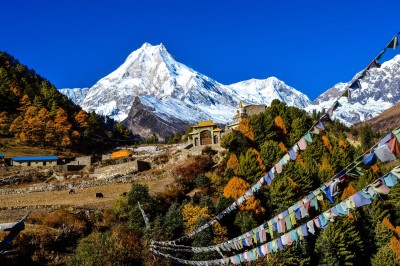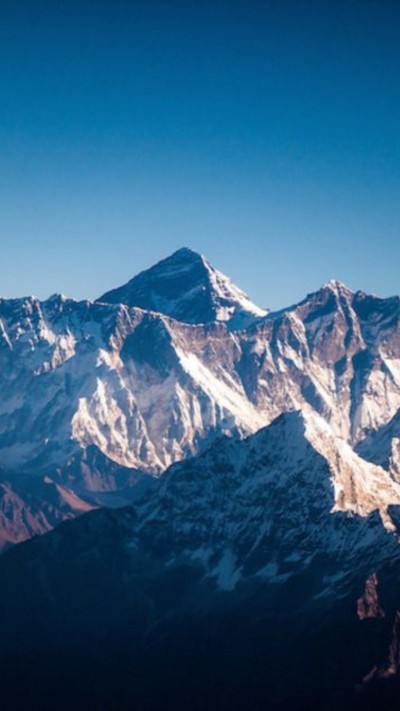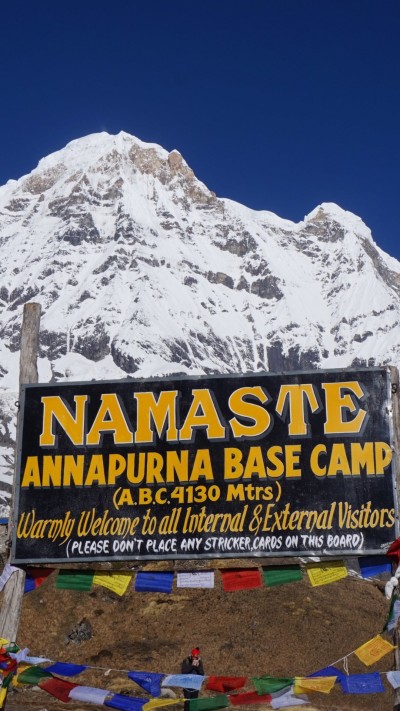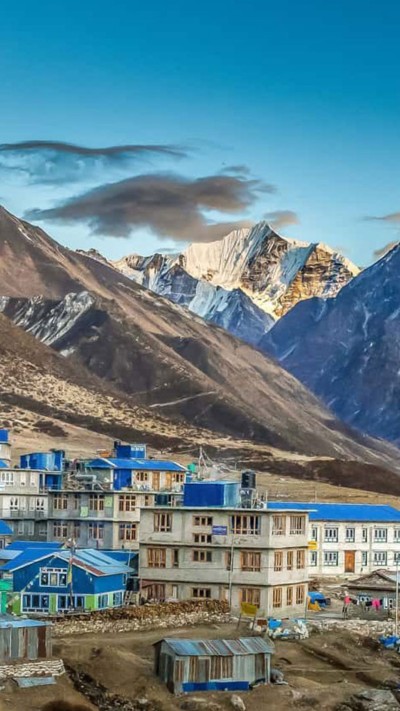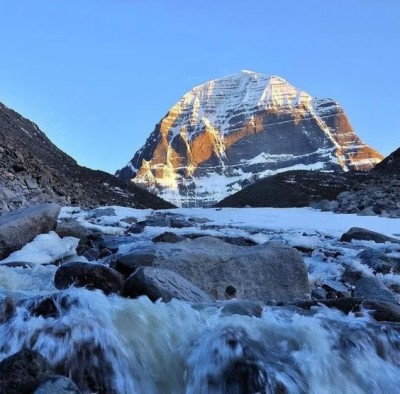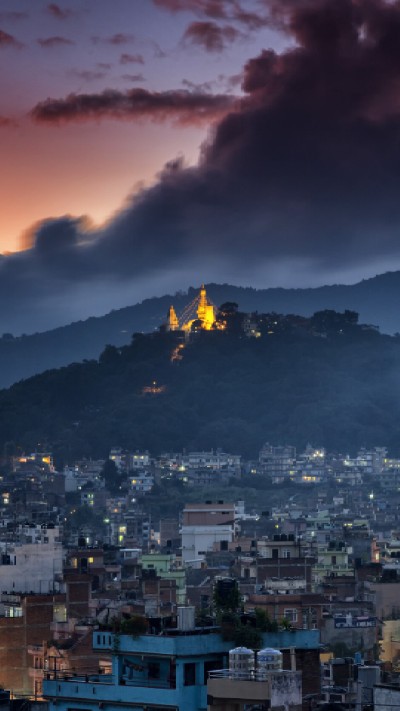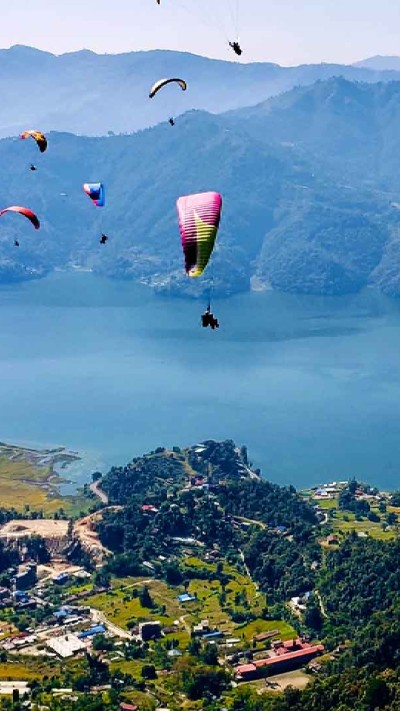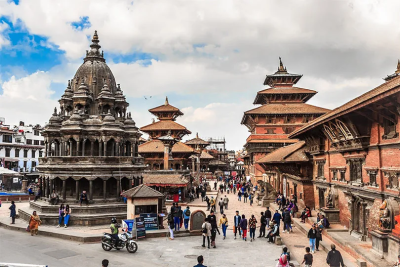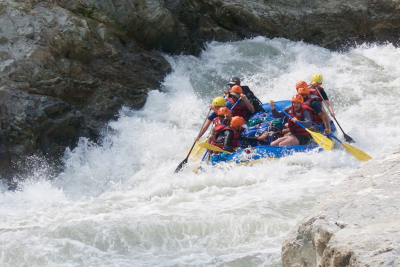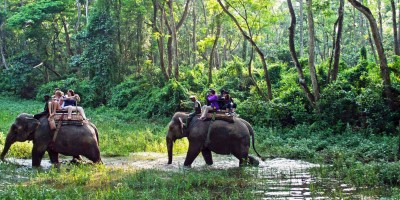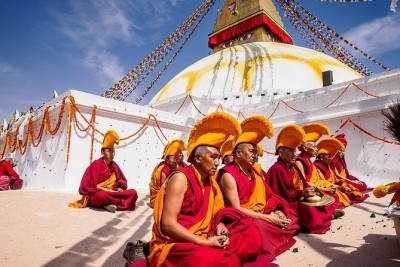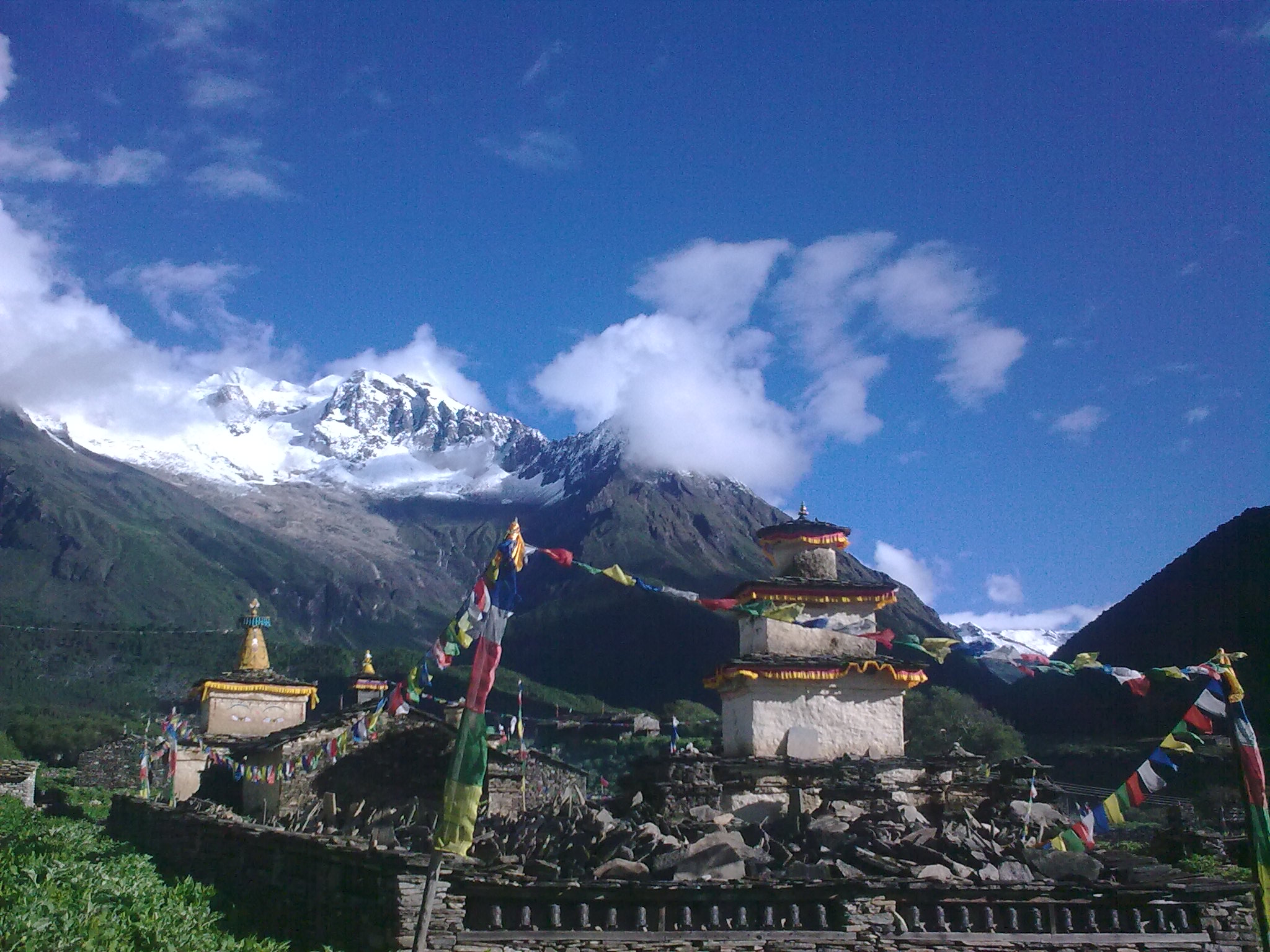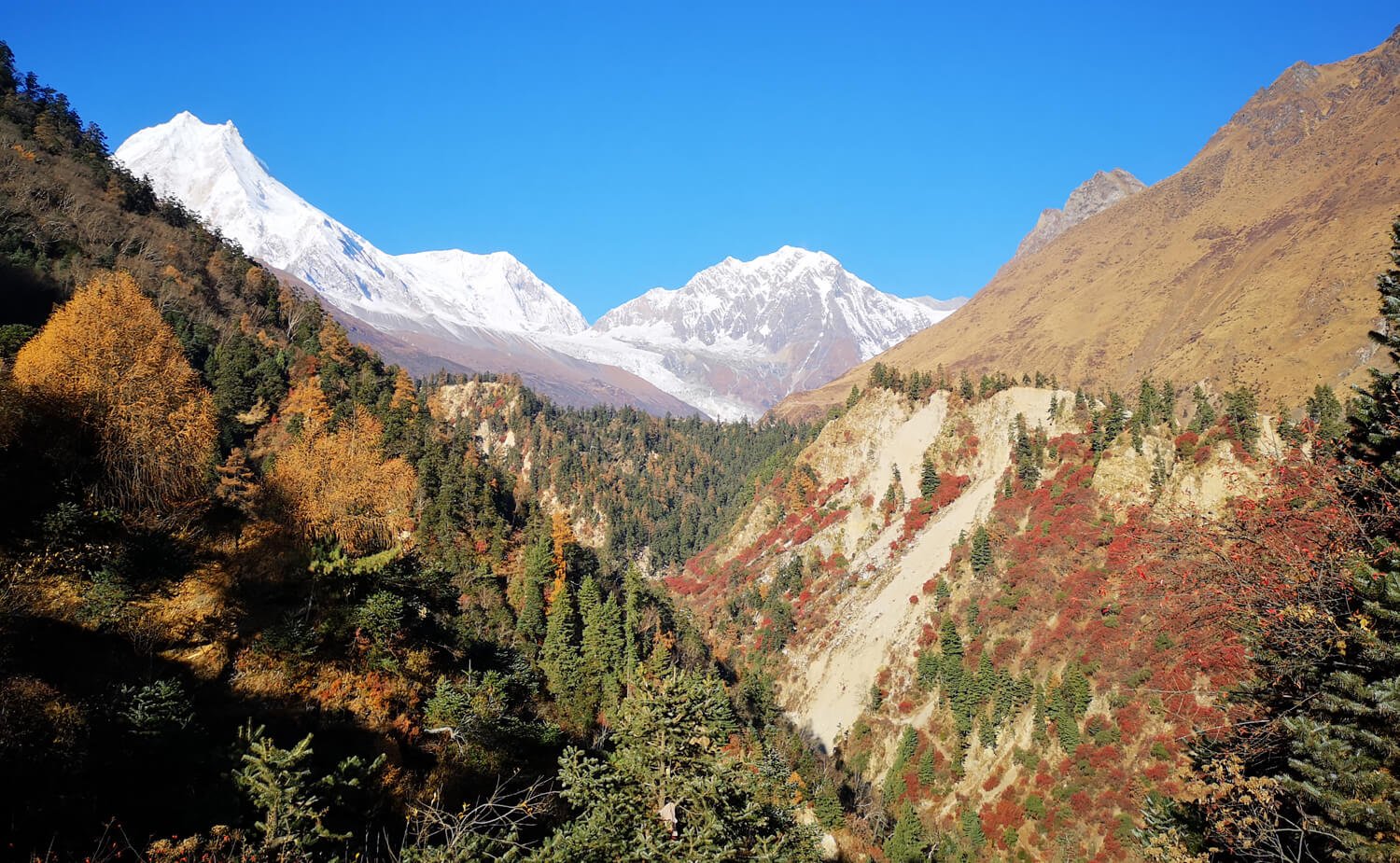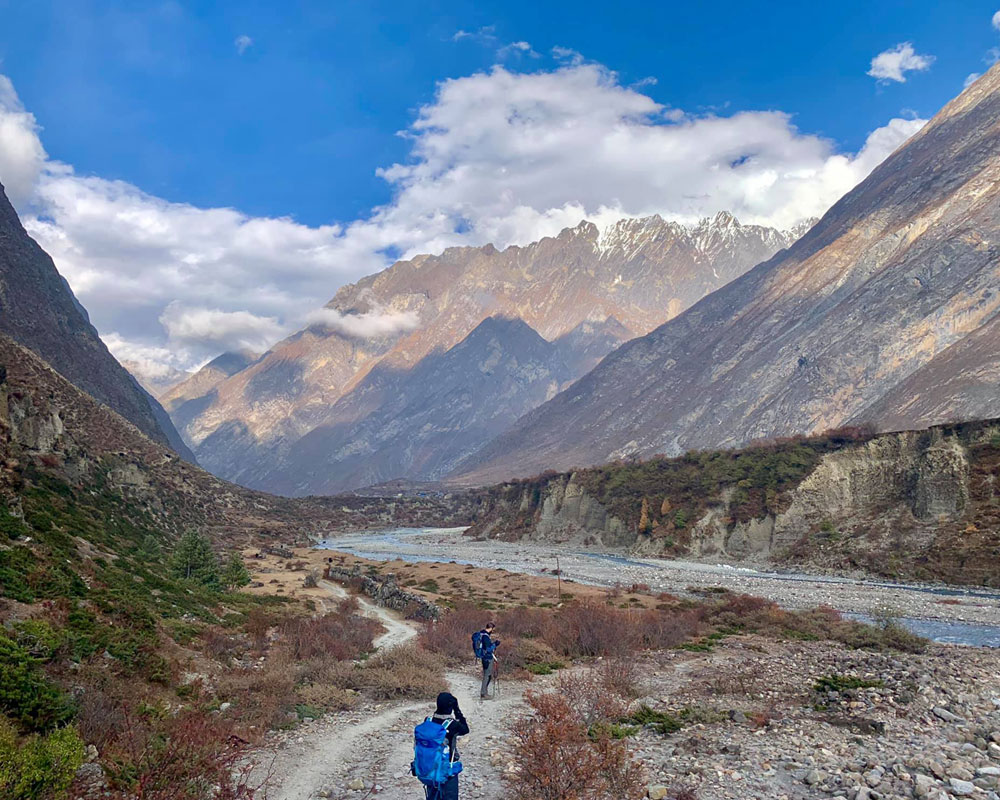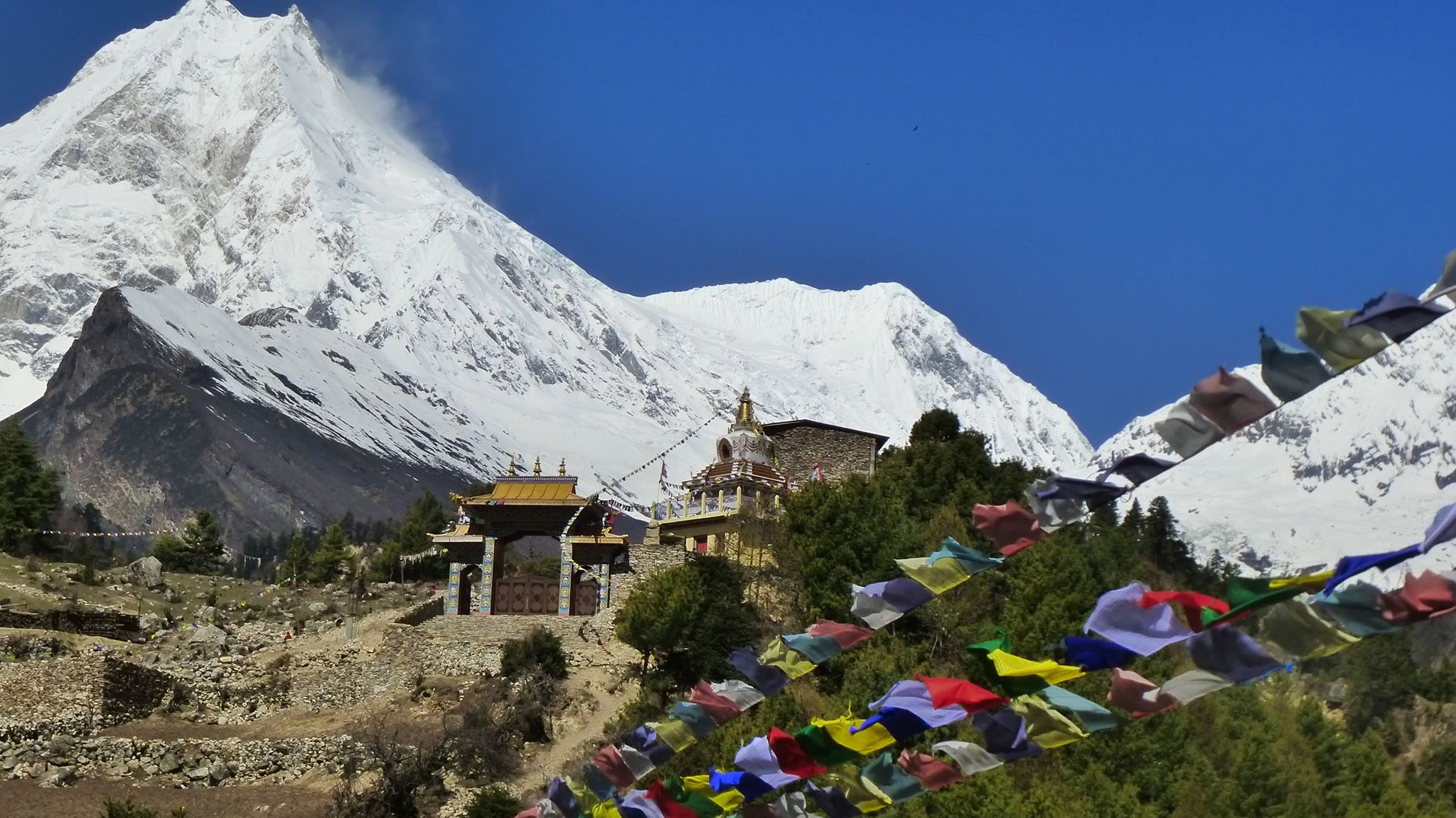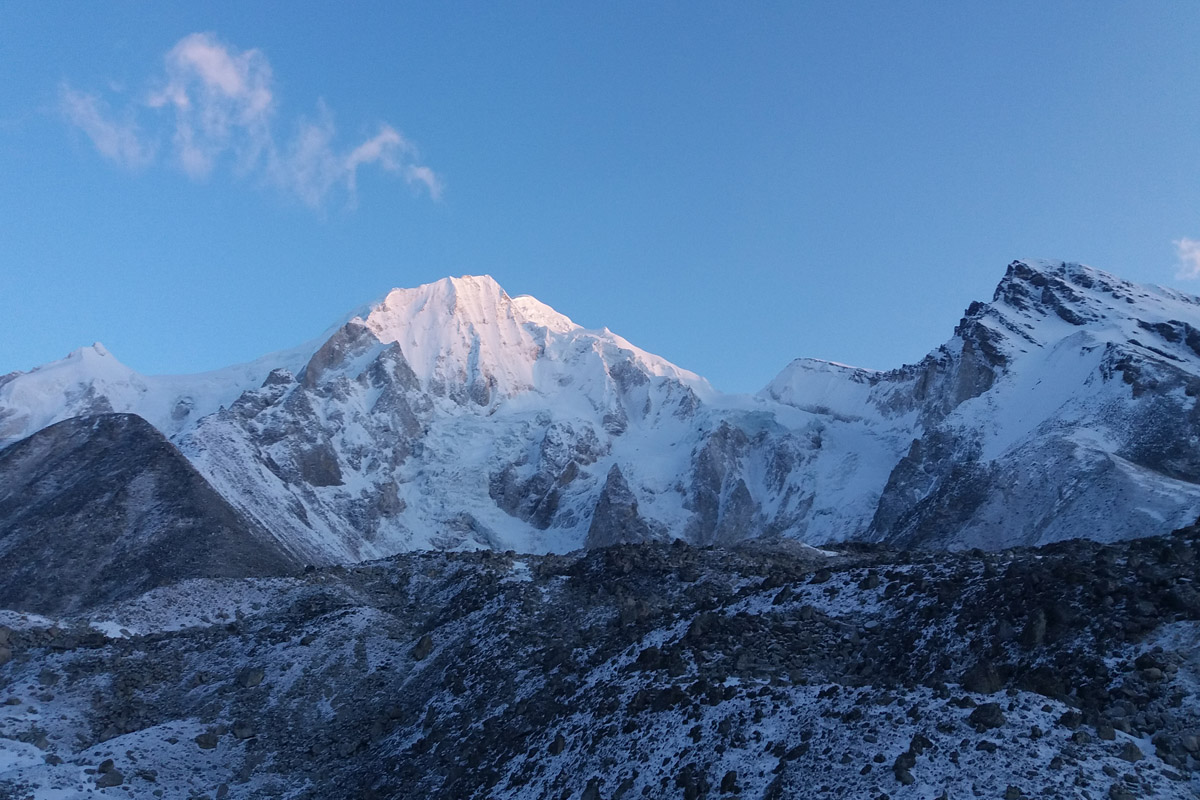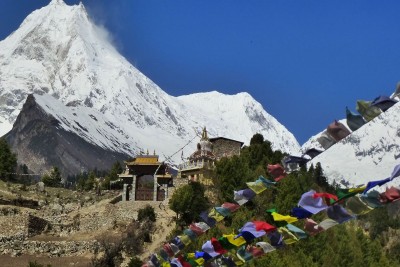Manaslu Tsum Valley Trek
The Manaslu Tsum Valley Trek offers a mesmerizing journey through remote Himalayan landscapes, rich cultural encounters, and breathtaking views of towering peaks, making it an unforgettable adventure.
Overview
The Manaslu Tsum Valley Trek offers an exceptional exploration of the remote and breathtaking regions of Manaslu and Tsum. This trek is a comprehensive experience that combines adventure, cultural immersion, and natural beauty.
The allure of the trek lies in the area's seclusion and the deep connection its inhabitants have with their environment and unique culture. Participants will be immersed in verdant forests, hear the roar of powerful rivers, and marvel at the majestic snow-capped peaks that frame the landscape. In contrast to more frequented trails such as those in Everest or Annapurna, the Manaslu Tsum Valley Trek is notable for the prevalence of domestic animals over human encounters. It is common to see larger herds of animals than fellow trekkers along the trail.
The route itself features narrow pathways carved into cliffs, leading adventurers through a series of scenic vistas en route to Manaslu Base Camp and the Tsum Valley. The auditory experience of the trek is equally captivating, with the constant sounds of flowing rivers and chirping birds enhancing the feeling of closeness to nature. The warm hospitality of the local people, who greet trekkers with smiles, and the modest yet welcoming tea houses further enrich the journey.
In summary, the Manaslu Tsum Valley Trek is an extensive and enriching journey that reveals the region’s stunning landscapes, vibrant culture, and serene environment. For a memorable adventure, consider contacting Himalayan Social Journey to arrange this exceptional trek.
Highlights
- Discover the unexplored and hidden treasures of the Manaslu region
- Journey to the northern borders of Tibet alongside the captivating Manaslu region
- Explore ancient monasteries, chortens, and gompas amidst the breathtaking landscape
- Marvel at the panoramic views of Mt. Manaslu, Hiunchuli, Ganesh Himal, & Larkye Peak
- Embark on a unique trekking experience through the enchanting Tsum Valley routes
Manaslu Tsum Valley Trek Route
The trekking route from Sotikhola, ascends the Buddhi Gandaki valley via the pine and rhododendron forests, heads up the ridge to Lokpa, the entrance to the wild Tsum valley. We would be in the upper valley of the inner Himalayas from Chhokangparo. Increased trails lead to quiet alpine glow and rough, high-mountain desert in cool bamboo and rhododendron forests. Visiting Piren Phu cave-the most sacred cave, above the Nile and Chhule is the Tibetan region, where the landscape is warm, unpopulated and reminiscent of the Tibetan plateau, with deserted hillsides and steep hills and mountains.
The historic Dephyudonma monastery is seen on the way to Mu Gompa, walking through yak pastures into trans-Himalayan terrain. We will have time to visit Rachen Gompa before entering the main route of Manaslu in Deng. On the arrival in Lho, the Nupri region is inhabited by Tibetan immigrants and is accompanied by flattering colorful flags of prayer and convents. Visit the Birendra Lake on a rest day in Samagoan and climb the larkya La, one of the Himalayan's most dramatic crossings.
Show more...Outline Itinerary ( 22 Days ) Expand all +
Upon your arrival in Kathmandu, our representative will meet you at Tribhuvan International Airport, extend a warm welcome, and transfer to your hotel. Take advantage of this day to adjust to the new time zone and immerse yourself in the lively atmosphere of Kathmandu. Orientation Program will be at 5 PM. After orientation program welcome Dinner with guide.
Show more...
Following breakfast, our knowledgeable tour guide from Himalayan Social Journey will escort you on a captivating journey to explore Nepal's UNESCO-listed world heritage sites. Today's itinerary includes visits to the renowned Pashupatinath temple, the majestic Bouddhanath stupa, the tranquil Swoyambhunath Stupa and the historic Patan Durbar Square.
Show more...
Today, you'll start your journey towards Machhakhola, a small village situated in the Gorkha District of Nepal.The drive from Kathmandu to Machhakhola is quite long, taking around 7 hours to cover the distance of approximately 200 kilometers.
Despite the dusty and bumpy road, you'll be rewarded with breathtaking landscape views from your window seat during the journey. Along the way, there are numerous rest stops where you can take short breaks and enjoy meals. Your day's adventure will conclude with a comfortable overnight stay at one of the welcoming teahouses in Maccha Khola.
Show more...
The next day, start the trek along the twisting Budi Gandaki river, spotting monkeys and langurs in the forest trail. Explore Gurung villages like Lower Khorlabeshi, where shepherds wear traditional Bokkhu capes. Reach Tatopani for warm showers to relax. Cross a new suspension bridge to Doban, avoiding a difficult 3-hour climb. Traverse a long cantilever bridge to Jagat, a charming Gurung village with flagstone paths. Verify your trekking permits at the check post, as you enter the restricted region.
Show more...
You will access the restricted region of Manaslu by crossing a ridge to reach Salleri and then cross the Budhi Gandaki River via a suspension bridge. The valley widens as you approach Philim, and at Ekle Bhatti, the trail diverges towards Tsum and Manaslu. Hiking through various villages, you will eventually reach Lokpa village in the hidden Tsum valley, which offers clear and breathtaking views of the Manaslu range, along with the blessings of Padmashamva from centuries ago. From Lokpa, you can also enjoy stunning panoramas of Himalchuli and Boudha Himal.
Show more...
Starting after breakfast from Lokpa Village, the wild route entrance to Tsum valley, you can enjoy stunning views of Baudha Himal and Ganesh Himal on clear days. The trail initially descends to the Lungwa river valley, then ascends through a dense subtropical forest of rhododendron and pine. Notably, there are no villages between Lokpa and Chumling. Crossing Syar Khola leads you to the village of Chumling, and a side trip to its upper parts offers great views of Ganesh Himal from a monastery. Chumling is equipped with a health post and three monasteries: Panago Gumba, Mani Dhungyur, and Gurwa Gumba.
Show more...
Today, you will enter the upper valley, a part of the inner Himalayas. The trail continues along the Syar River down to Domje - the largest city in Tsum valley. From Domje, you will continue climbing uphill to arrive at Chhokangparo. On a clear day, you can get magnificent views of Himalchuli and Ganesh Himal from Chhokangparo. At Chhokangparo, you will also experience the hospitality of local (Tibetan group “Tsombo”) people along with Tibetan Chiya (butter tea) and local meals.
Show more...
Today's trek covers a relatively shorter distance. After leaving Chhule, the last village in the north upper Tsum Valley, you'll find the Nile, situated just a 20-minute walk away on the western side of the Shikhar Khola. As you approach Ngakyu Leru, you'll witness the locals engaged in farming activities, benefiting from the fertile land.
Continuing the journey, you'll pass Lamagaon and arrive at the revered St. Milarepa Piren Phu Cave, where the footprint of Milarepa is believed to be preserved in the rock. This sacred cave, also known as the "pigeon cave," holds immense significance in the Tsum valley. Adjoining the rocky cave are two separate Gumbas adorned with beautifully painted Buddhist murals, intricate stone carvings, and long prayer flags, making Piren Phu Cave a cherished socio-cultural treasure in the valley. Crossing a suspension bridge over the Shiar River, the trek continues through various villages until you reach Nile.
Show more...
A short walk from the Nile along the west bank of the valley close to the Tibetan border leads to Mu Gompa - the highest point of the Tsum Valley Trek. You will hike up through yak pastures through typical dry and arid trans Himalayan terrain. The Mu Gompa monastery has rows of Chortens and provides beautiful mountain views. Moreover, you get an opportunity to visit Dhephu Doma Gompa - one of the oldest monasteries in the Tsum.
Show more...
Starting from Gompa, your descent journey commences. You will make your way down to Rachen Gompa, continue to Chhule, and eventually arrive at Phurbe. Rachen Gompa is located near the Nepal-Tibet border, nestled amidst towering mountains. However, on this day, path leads us through a lush forested area, culminating in our arrival at Chhokangparo.
Show more...
Continuing your descent from Chhokung Paro, you proceed towards Gho. Along the way, you will cross a suspension bridge near Gho and continue our hike to reach Rainjam Village. Departing from Rainjam, you will descend further into the Tsum Valley until you will finally reach Chumling, your destination for the day.
Show more...
Today's journey involves leaving Chumling and continuing your descent, making it a relatively easier day. As you make your way along the bank of Shair Khola, your destination is Lokpa Village. If the weather is favorable, you might encounter large herds of sheep and goats along the path.
Beyond Lokpa, the trail descends, leading you to cross the Budi Gandaki River over a sturdy bridge. From there, you will enter a narrow gorge, where the path alternates between ascending and descending while gradually climbing through the valley. Your trek includes crossing a river on a suspension bridge to reach Nupri and then passing through bamboo forests until you will arrive at the charming Gurung village of Deng (1860m).
Show more...
From Deng, you will climb to Rana Village (1,910m) and hike to Bhiphedi (2,130m). The path twist in and out of valley canyons, crossing the Serang Khola, and leads you to Ghap (2,160m). Leaving Ghap, you will face a steep ascent through bamboo and rhododendron forests, crossing wild rivers a few times before reaching Namrung Village, the entry point to the Nupri region, inhabited by Tibetan descendants.
Show more...
Today, you will leave Deng and cross Budhi Gandaki and ascend your way to Rana. The trail passes Namrung village is a good viewpoint for Siring and Ganesh Himal and from the village one can also see Mt. Himal Chuli in the south. You will climb steadily and pass through forests and reach Lihi, a fine village with many chortens and barley terraces. The trail drops and crosses the side valley of Simnang Himal with Ganesh Himal always close by. We further pass through Sho and then finally reach Lho Village.
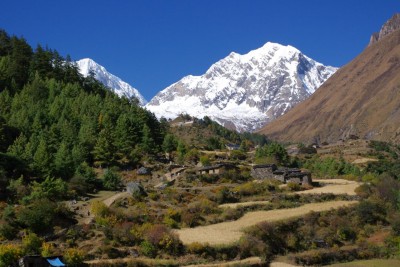
Today, you will leave Lho village and make the journey towards, Sama Gaun. The trail is beautiful with forest, deep valleys and magnificent view of Manaslu and shimmering large glaciers.
Show more...
Early in the morning, you will follow trail through forest before steep ascent to a slope and to a moraine. There is magnificent view of glacier, a turquoise lake and wonderful mountains from all angles. Trekking to Manaslu Base Camp takes approximately 3-4 hours.
Show more...
Today, you will descend to the Budhi Gandaki River, that has turned north and follow it to a bridge over a side stream. The trail to the left leads to the Manaslu Base camp. The Larkya la Trail passes several mani walls as the valley begins to widen. It is an easy trail on a shelf above the river passing the juniper and birch forests of Kermo Kharka. You will drop off the shelf, cross the Budhi Gandaki on a wooden bridge and climb steeply onto a promontory between two forks of the river. From a stone arch you can view a large white kani. Finally passing through the kani you will find Samdo.
Show more...
Today, you will walk down the edge, cross the wooden bridge over Budi Gandaki and start walking upwards. Upon crossing two streams and witnessing the Larkya Glacier you will go around the valley of the Salka Khola and climb up again to the stone guest house (4450 m), which is not a lodge but a kind of shelter called Dharmshala, also known as Larke Phedi. The short walk today also leaves plenty of time for acclimatization and relaxing in the afternoon.
Show more...
This is a special day as you ascend to the trail's highest point, the Larkya La Pass (5,160m / 16,929 ft). Although challenging in adverse weather and snow, it is feasible with an early start around 3 am. Walking steadily is the key to successfully crossing the pass before afternoon. The reward awaits at the top with awe-inspiring views of Himlung (7,126m / 23,379 ft) near Tibet, Kang Guru (6,981m / 22,903 ft), and Annapurna II (7,937m / 26,040 ft) in the Annapurna Range.
Take in the beauty of the pass before descending for about 3 hours towards Bimthang,where you will spend the night. On your way down, marvel at the majestic icefalls and surrounding mountains, including Pongkar Tal nestled between the Pongkar and Salpu Danda Glaciers.
Show more...
On the final day of your Manaslu Tsum Valley trek, you'll be enchanted by the lush forests abundant with diverse flora and fauna, including vibrant rhododendron bushes. As you descend, you'll cross the Dudh Khola and make your way to Karche for a delightful lunch. Be prepared to witness signs of a glacial flood, with tree trunks scattered and riverbanks altered, making the trail rough. The route leads to Gurung Goa, the first village since Samdo. Passing through picturesque agricultural fields and charming oak and rhododendron copses, the valley becomes even more inviting. Stay on the north (true right) bank until you reach Tilije. From there, continue your leisurely stroll towards Dharapani, cherishing the last moments of your memorable Manaslu Tsum Valley trek.
Show more...
After your trek, you'll board a convenient jeep ride from Tilije to Beshi Sahar. From Beshi Sahar, you'll embark on a comfortable journey back to Kathmandu, which takes around 6 to 7 hours. Once in Kathmandu, you can unwind and relax spa and massage at Himalayan Suite Hotel.
Show more...
We will arrange your transfer to the Kathmandu airport for your return flight to your home country or to start your next adventure.
Show more...
Departures & Availability
What's inside the package?
Inclusions
Exclusions
Additional Information
Best time to do the Manaslu Tsum Valley Trek
The monsoon that is almost everywhere in Nepal is in the fall (October-Nember) between the mid-June and the end of September, the most popular season is the summer, where the skies are washed and the wetter looks are superior, springs (March-May) are another common time for trekkers. Likewise, most people are unwilling to walk during the winter when the temperature in high elevation is too cold and snow can block high passes. The trail is unworkable and dangerous during the summer / mountain season.
Trekking Journey
The trek begins on a spectacular drive to the ancient village of Baluwa, Barpak or Laprach, following the lush Daroundi Valley, and ascending to the Mamche Danda (2800 m), offering a wide range of Himalayans such as the Ganesh Himala, Buddha Himal, Shringi Himal, and the Himal Lamjung. You could take a snap of the beautiful area from Mamche Danda to Pusu Danda before heading down to Laprak. Finally, Laprak's trek from Barpak is sufficient to reach the Budigandaki River. The trip will help the acclimation process and shape the legs and lungs with the help of the fresh mountain breeze.
Required fitness level for this trek
Our daily trekking itinerary is 5-7 hours in lower altitude of 3500m and normally lasts from 3-4 hours daily on high mountains altitude excess of 3500 m. Steeper slope trekking is physically difficult than low latitudes trekking. This is a distant mountain trip, with long ascents, steep descents and straight roads after a straight trekking trails. For trekking, past hiking experience will be an added benefit, as it requires no technical knowledge and skills. Trekkers who can travel with a light day pack five to six hours a day at a respectable pace can take part on this journey.
Some days take longer hours of trekking so you need to be reasonably fit and ready for long days. Daily workouts and jogging a few weeks before the trip are a good time to enhance our endurance. In order to participate in the trek, all participants should be in good health with normal physical fitness and have a strong attitude, belief and determination. Before undertaking the trip it is very important to ensure that you are as fit to trek for long hours as possible. Before booking the trek, participants with pre-existing medical conditions such as heart and lung disorders and blood disorder should notify us.
Lodging and meals during the trek
All accommodations are on twin-sharing room BB basis. Single room will be served on request with paying the supplementary. During the trek at Lodges/Tea houses the room will be sharing basis usually with attached bath room in lower altitude but note that it might be difficult to find with attached bath room at higher altitude.
Mostly during lodge trek, we can enjoy authentic Nepalese fresh produce (Dal bhat, vegetation, curry ...) rice, lentil, along with more widely accepted cuisineYou may select from the menu of the lodge according to your preferences and at the moment our guide would be present with you to help you taste the food and decide what to eat if you have if you find the meals difficult to choose. From the teahouse, or from the lodge table, breakfast and dinner is served, while lunch is provided on the way to the next stop.
Wi-Fi and Connectivity
The internet service is available at lodges with an extra cost. You can contact your family and friends via lodges, but communication at high altitudes is via the safety phone. For any assistance during the trek, you will always be linked to Kathmandu's HSJ office. Often, the signal may be not very good before the high altitude, depending on the type of network you use. On your request, a separate local sim card can be issued for your good access to the connection (most of the places now have wireless internet services at extra costs).
Electricity and Charging of your electronic devices
Electricity for the camera and the handheld battery charge is accessible in the lodges. However extra cost shall incur. Most lodges are equipped with hydropower and some have solar panels.You can charge all your devices staying overnight in one of chosen lodges or tea houses.
Availability of drinking water during the trek
Water can be bought from nearby lodges and shops during a hike and boiled water can be filled at additional expenses. In the drinking water, a water purification pill is recommended.
Obtaining Trekking Permits
You need Manaslu special permit with Conservation Area Permit, and Annapurna Conservation Area Permit (ACAP) fees, Himalayan Social Journey will take care of all the necessary paperwork.
Please dont forget to bring your 4 PP sized photos for the TIMS and Permits.
List of Equipments you will need for trek
Clothing
· Trekking boots
· Short-sleeved Trekking shirts
· Trekking pants and jackets
· Thermals underwear
· Long-sleeved Trekking shirts
· Insulating down jackets
· Woolen cap
· Trekking Gloves
· Raincoats
First Aid
· Diamox tablets
· Sanitary pads / Tampons
· Anti-nausea Medicines
· Band-aids
· Mosquito and insect repellents
Toiletries
· Soap
· Toilet Paper
· Shampoo
· Sunscreen
· Moisturizer
· Hand sanitizer
Accessories
· Sunglasses
· Sleeping bag
· Cameras
· Batteries
· Water Bottle
· Solar Chargers
· Hot water Thermos
Important Documents
· Passport
· Travel Permits
Drinking water during the trek
The Manaslu trek is physically exhausting and drinking a lot of water is a must. The first several days at low altitudes can be hot, so expect a lot of water to be needed. At cooler, higher altitudes, you can feel less thirsty, but drinking lots of water allows you to acclimate. Planning to have at least two liters of water when trekking every day is a smart way to start. Filling up water is quick. Taps in, out or in guesthouses mean that there are plenty of places to fill your bottles and/or your water bladders.This could be where you stay, a lunch stop, or a shared public tap used by locals. Use an efficient sterilization method to make sure your water is safe and not contaminated in anyway.Bottled water is available to buy throughout the trek, but we would advise against this for a number of reasons.You do not need them if you use sterilization method. Environment concerns are there and also buying water is expensive up in the mountains.
Travel insurance
We suggest taking out an insurance plan for your individual accountability, accidents and illnesses during the service.Regarding the type of activity, you may be asked to show a certificate of insurance for help and support, sanitation and search. This service is private and not free in Nepal, the helicopter will not take off until it is convinced to pay for the insurance.
Extra Expenses
It’s difficult to give an exact amount of money that you should bring. Costs will vary according to how much you want to spend for shopping and where and what meals (lunch & dinner) you want to eat. Trekkers find that around $20 (for lunch & dinner) a day is reasonable for the trekking days.
As for the tips, A general rule of thumb for tipping is USD 25 for the guide per traveller and USD 25 for porter between two travellers if you are fully satisfied with their service. So we suggest you allocate a minimum of USD 50 for Tipping. This is just a guideline and you may tip whatever / how much you think is appropriate for the services rendered which made your trek a memorable one.
Luggage per one person
For the trek, we'll have one porter for two people as per group size. The porter will carry 10-12 kg per person luggage during the trek. You need to carry your daypack to keep your personal belongings such as wallet, camera, water bottle, dry snack, headlight, gadgets etc.
Solo trekking
Single Supplementary
There will be two people accommodated in each room for the duration of the tour. If you prefer private accommodation, you'll find the option for "single supplement" of USD 300. Important: Please note that during the trek there are some lodges which won't have sufficient rooms to provide private accommodation. So, even if you purchase single supplement you will end up sharing a room for some days of the trek.
Travel and Transportation Modes
On Land: Touring to and from city destinations is done on a private vehicle such as a car, jeep or microbus. Luxury tourist buses, which are only hired by the company for the most part, make the long distance travel. You will may have to take a public bus on some trip, but you do not need to worry about your protection or comfort because you ride with our guides and support staff in a group.
This Tour with HSJ
Guides and Porters
Our local Nepali team is one of the most experienced, hospitable and respected trekking outfits in Nepal. The team is fully licensed and affiliated with the Trekking Agency's Association of Nepal (TAAN), Nepal Mountaineering Association, Nepal Tourism Board, Govt. of Nepal, Sustainable Tourism Network, Himalayan Rescue Association and Kathmandu Environmental Educational Project. You will be provided with the professional and an experienced English speaking trekking guide with the good knowledge of the place and the trek. The trekking crew is skilled with the experience of over 10 years, well-trained, friendly guide and, courteous and helpful porters, assured of a wonderfully memorable experience.
For the trek, we'll have one porter for two people as per group size. The porter will carry 12-15 kg per person luggage during the trek. You need to carry your day pack to keep your personal belongings such as wallet, camera, water bottle, dry snack, headlight, gadgets, etc. The safety and concerns of our porters is our collective responsibility. We take our responsibilities towards them and their safety concerns strictly. On your part, please carry only things that are of absolute necessities.
Other Programs and complimentary services with this trip
• Welcome and Farewell dinner
• Yoga Classes
• Spa services
How do we make sure you get the best experience of this trek?
We are your completely flexible travel partner. Want to follow different route? We have you covered. Have extra time in Nepal? Excellent! We have more add-on tours like Chitwan Jungle Safari, Cable Car ride to Chandragiri hills, Cooking and Yoga classes in Kathmandu and so on. Would like to customize the trip? Well, why not? Give us your ideas and we will prepare complete itinerary for you. Do you want to use different standard of accommodations than provided in the itineraries? Of course! You absolutely can. From your arrival until you departure, your wishes are our command. Feel free to make the request.
Last minute booking
It is best to book in advance but for those who cannot, for whatever reason, make a last minute reservation special arrangement for Himalayan Social Journey. In the case of last minute reservation, 100% tour payment will be approved within 24 hours. We try to operate a trek at any time but we are not liable for the delay in case of last-minute reservation, because of uncontrolled changes such as weather and the availability of accommodation.
Feedbacks
Throughout the years of business, we have always put the customers feedback as our inspiration towards making our company great travel partner. With many ups and downs, and good and not so good feedbacks we have reached where we are now. At the end of the trek, while you are with the crew during farewell dinner, we would appreciate if you give us your valuable feedback, account of good and bad experiences, recommendations and also your honest rating to our trip advisor page.
Essential Info Expand all +
This package of Manaslu Trek is 22 Days long. The number of days can vary depending on the routes and transportation modes, offers and packages you choose.
Guide is more than just someone that helps you with navigation, guide with knowledge of locality, way of life and also being responsible to attend to your other needs like finding you comfortable accommodation. Having a porter will help you carry your gears and belongings and you can travel at your pace while enjoying your trek. A guide can arrange for permits and TIMS for you and dealing with all other technical aspects of trekking.
Our daily trekking itinerary is 5-7 hours in lower altitude of 3500m and normally lasts from 3-4 hours daily on high mountains altitude excess of 3500 m. Steeper slope trekking is physically difficult than low latitudes trekking. This is a distant mountain trip, with long ascents, steep descents and straight roads after a straight trekking trails. For trekking, past hiking experience will be an added benefit, as it requires no technical knowledge and skills. Trekkers who can travel with a light day pack five to six hours a day at a respectable pace can take part on this journey.
Some days take longer hours of trekking so you need to be reasonably fit and ready for long days. Daily workouts and jogging a few weeks before the trip are a good time to enhance our endurance. In order to participate in the trek, all participants should be in good health with normal physical fitness and have a strong attitude, belief and determination. Before undertaking the trip it is very important to ensure that you are as fit to trek for long hours as possible. Before booking the trek, participants with pre-existing medical conditions such as heart and lung disorders and blood disorder should notify us.
The tea houses provide you with a bathroom attached to each room at lower altitudes. But the facilities are minimal as you walk upwards.
Most of the time, you'll find a double room and a common toilet. Two beds with mattresses, pillows and warm blankets are available in the house. Single room is available on extra charge. Warm shower would also incur extra cost.
All the teahouses prepare healthy food and drinks. They serve both vegetarian and non-vegetarian options. Also, alcoholic and nonalcoholic beverages are available in the teahouses. Meat and Alcohol are not recommended during the trek.
The internet service is available at lodges with an extra cost on Tsum Valley and on the Manaslu Trek circuit. You can contact your family and friends via lodges, but communication at high altitudes is via the safety phone.
For any assistance during the trek, you will always be linked to Kathmandu's HSJ office. Often, the signal may be not very good before the high altitude, depending on the type of network you use. On your request, a separate local sim card can be issued for your good access to the connection (most of the places now have wireless internet services at extra costs).
Electricity for the camera and the handheld battery charge is accessible in the lodges of The Tsum Valley and Manaslu Circuit trek by charging all lodges. Most lodges are equipped with hydropower and some have solar panels. Water can be bought from nearby lodges and shops during a hike and boiled water can be filled at additional expenses. In the drinking water, a water purification pill is recommended.
You need Manaslu special permit with Conservation Area Permit, and Annapurna Conservation Area Permit (ACAP) fees, Himalayan Social Journey will take care of all the necessary paperwork.
Please dont forget to bring your 4 PP sized photos for the TIMS and Permits.
Prior to booking the trek, you need travel insurance covering medical and urgent repatriation and helicopter rescue and evacuation costs for trekking members at high altitudes. Until you continue your trekking you should submit it to us.
The best months of trekking are Spring March, April and May, as the weather is bright and calm in these months and you can see high mountains, with Manaslu full of snow. Spring and May are the best months. Rhododendron is ideal for the spring season; all the rhododendrons turn into a wonderful garden and you can see them.
Autumn is another strong season for the Manaslu tour. The perfect months for trekking after monsoon in Nepal are September, October and November. During these months you have a beautiful view of the Himalayas and their people, because you can be part of Nepal 's biggest festivals in the fall.
Clothing
· Trekking boots
· Short-sleeved Trekking shirts
· Trekking pants and jackets
· Thermals underwear
· Long-sleeved Trekking shirts
· Insulating down jackets
· Woolen cap
· Trekking Gloves
· Raincoats
First Aid
· Diamox tablets
· Sanitary pads / Tampons
· Anti-nausea Medicines
· Band-aids
· Mosquito and insect repellents
Toiletries
· Soap
· Toilet Paper
· Shampoo
· Sunscreen
· Moisturizer
· Hand sanitizer
Accessories
· Sunglasses
· Sleeping bag
· Cameras
· Batteries
· Water Bottle
· Solar Chargers
· Hot water Thermos
Important Documents
· Passport
· Travel Permits
There will be two people accommodated in each room for the duration of the tour. If you prefer private accommodation, you'll find the option for "single supplement" of USD 300. Important: Please note that during the trek there are some lodges which won't have sufficient rooms to provide private accommodation. So, even if you purchase single supplement you will end up sharing a room for some days of the trek.
Indeed, it is secure and not risky trek. While there is always the possibility of avalanche because it is in mountainous areas, this is usually not dangerous. It's not a complex walk, the pitch is not rough, no tough moves, no sharp hits. That said, accidents can occur on any walk, so caution is of course required. A responsive acclimatization is important.
Yes, Himalayan Social Journey is flexible travel partner. It is possible to organize the private trip or private group trip to Manaslu. The minimum people for the group is 2 however supplementary charge will be applicable for the solo traveler wanting to do private trip.
You will also have the option to share the room with another solo traveler depending on your and their consent and interest.
In the average, you will be walking for 5-6 hours each day during the Manaslu Circuit and Tsum Valley Trek.
Insurance of the guide and porter is covered by the company. All our guides and porters are properly insured.
Yes, children are allowed to do the trek, however it is safe to not bring children under the age of 12 to do the trek as they may find it difficult and not able to walk. This could affect your trekking experience as well.
No, there is no age limit to do the trek. If the person is healthy and physically fit, they can do the trek.
Liquid needs and usage of our body is about 3-5 liters a day (13-21 cups). Several findings suggest that drinking carbohydrate and electrolytes (such as sports drinks) in a liquid is safer than moisturizing water at altitude alone. There is also a study done on the effect of tea in reducing the fatigue and mood boosting. Results have been positive. This being said apart from water, you can drink green tea, masala tea, and ginger tea and garlic soup.
The Tap water supplied along the trails are considered safe for drinking and local people drink it without treating, however for the foreigners, it is best that the tap water be only drunk after purification. There are two good options for having proper drinking water during the trek. You can bring water purification tablets or fill your bottle for a nominal fee from the recognized and regulated "pure water" stations along the trek. As the last alternative, you can also purchase bottled water at the lodges but this is not recommended. It is very important that you drink at least 3 - 4 liters of pure water daily during the trek.
You may have to apply and obtain necessary TIMS and Permits yourself if you are trekking solo or independently. If you are hiring trekking agency or guide, this will be taken care for you.
No, the company does not provide trekking poles, you will have to manage it on your own or our guide can help you buy it when you are in Nepal. The pair of trekking poles cost from $10-$15.
Yes, we do provide sleeping bags. The sleeping bags we provide are of good quality. They help you sustain the colder climate in Nepali mountains up to -25 degree Celsius of temperature. However if you need the one of your own, you can buy one here. Your guide shall assist you to get it here. Keep the track of the weather forecast of the area and pack your clothes accordingly. This would help you be prepared for the type of weather Nepali Mountains are accustomed to.
Important Information Expand all +
There are three ways to get a visa for Nepal
- Visa on arrival: You can get a visa on arrival at the Tribhuvan International Airport in Kathmandu or other designated entry points. The visa fee is USD 30 for 15 days, USD 50 for 30 days, or USD 125 for 90 days.
- Online application: You can apply for a visa online through the Nepal Immigration website. https://nepaliport.immigration.gov.np .The visa fee is the same as for visa on arrival.
- Nepalese Embassy or Consulate: You can also apply for a visa at a Nepalese Embassy or Consulate in your home country. The visa fee may be different, so check with the embassy or consulate.
Visa requirements
- Passport valid for at least six months from your planned entry date into Nepal.
- Visa application form.
- Passport-sized photo (Bring 4 )
Gratis Visa (Visa for Free)
Gratis Visa is issued free of cost in case of following categories of Visa applicants:
- Children below 10 years except US citizens
- Up to 30 days for SAARC Citizen - Bangladesh , Bhutan, India , Maldives , Pakistan , Sri-Lanka (except Afghanistan) visiting Nepal for the first time in a given visa Year. Afghan citizen are eligible for Gratis Visa on Arrival only upon the recommendation of Department of Immigration. If you are an Afghan citizen, you can request concerned institution inviting you to Nepal for necessary paperwork with Department of Immigration to get you Gratis Visa 'On Arrival'.
- Non Residential Nepalese(NRN) card holder ( issued by MoFA /Nepalese diplomatic missions abroad)
- Chinese Nationals for 150 days
Nationals of following countries are requested to acquire Visa prior their arrival from their nearby Diplomatic missions (Embassies/consulates) of Nepal Government.
- NigeriaGhana
- Zimbabwe
- Swaziland
- Cameroon
- Somalia
- Liberia
- Ethiopia
- Iraq
- Palestine
- Afghanistan
- Syria
- Refugees with travel document
If your passport is not valid for at least six months, you will need to renew your passport before you travel to Nepal. You can renew your passport at your local passport office. The process of renewing your passport can take several weeks, so it is important to start the process early.
By air:
Nepal has Three international airports: Kathmandu, Bhairawa, and Pokhara. Currently, Pokhara airport does not handle international flights. However, there are a few flights to Bhairawa from few countries. The main international airport in Nepal is Tribhuvan International Airport (TIA), located in Kathmandu. You can search TIA airport to book your International flight.
By land: There are multiple land entry points along the borders of Nepal, India, and China. These entry points include Kakarvitta, Birgunj, Bhairahawa, Nepalganj, Dhangadhi, Mahendranagar, and Kerung(china boarder)
If you've booked a multiday tour or trekking package with Himalayan Social Journey, we'll pick you up from the airport. Upon arriving at Tribhuvan International Airport in Kathmandu, our representative will be there to greet you with a sign displaying your name and our company's name. We'll then take you to your pre-booked hotel.
To make the pick-up process smooth, kindly share your flight details, including flight number and arrival time. If there are any changes to your arrival plans, please inform us as soon as possible so we can arrange your pick-up accordingly. Travel with us for a hassle-free experience!
Please keep this thing in your mind that there are some airport touts and scam artists who take advantage of tourists. They might offer to carry your luggage and they want a large amount of money. Sometimes they intimidate our drivers and even take away their signs. Anyway...if you want someone to help you with your luggage you can give them NOT MORE THAN 1 - 2 DOLLARS. This is a small hassle that tourists sometimes face upon arrival at the airport. Do not stress about this but just be aware not to give more than a few dollars for their luggage handling if you choose to take someone's services. Nepalese in general are very kind and hospitable people.
The official currency of Nepal is the Nepalese rupee (NPR). Major foreign currencies such as USD, AUD, and EURO are accepted for VISA.
There are plenty of ATMs in these major cities, so you can easily withdraw cash from your foreign currency bank account. Credit cards are also accepted in some shops and restaurants, but they are not as widely accepted as cash.
On the trek, you will only need to use Nepali rupees. You can exchange your foreign currency for Nepali rupees at your hotel, money exchanges, or the airport. Himalayan Social Journey representatives will also be happy to help you exchange money.
If you have booked a trekking or multi-day tour with Himalayan Social Journey, the orientation meeting usually happens at your Kathmandu hotel around 4 or 5 pm. Our team will provide you with the specific details upon your arrival.
If you're arriving early or leaving late, please ensure to arrange extra hotel accommodations by contacting reser[email protected]. Let us know if you'll be extending your stay in Nepal, and we'll book your additional nights. Also, kindly share your flight details with us to facilitate a smooth pick-up and drop process.
When you book a trip with us, the standard accommodation arrangement is on a twin-sharing basis. This means two people will be staying in each room throughout the trip. However, if you prefer to have a room to yourself or if you're traveling alone, you can choose the "single supplement" option. By selecting this option, you'll have a private room during the trip, but please note that there will be an additional cost for the single room arrangement according to tour / trek.
For each tour date, there will be several separate groups, each with a maximum of 14 people and their own experienced English-speaking guide. During the trek, there will be a suitable number of porters available to carry your luggage. Additionally, if you prefer to do a private tour or trek with your own group, that is also possible.
Nepal has five main seasons: summer, monsoon, spring, autumn, and winter. Each season offers unique experiences and weather conditions.
Winter (Late Dec - Feb): Cold temperatures, great for festival tours and special highlights.
Spring (Mar - May): Magical rhododendron blooms, ideal for trekking and peak climbing.
Monsoon (Jun - Aug): Low season with rain, but perfect for nature lovers and discounts on hotels.
Autumn (Sep - Nov): Peak season, clear weather, and popular trekking regions fill up fast.
You can check the live weather condition via this website https://www.accuweather.com
The hotel in Kathmandu where you'll stay during the trip offers complimentary storage services. You can leave your luggage and extra clothing that you won't need for the trekking / tour. Rest assured, you can collect them once the trek and tour are over.
Don't forget to bring both TWO and THREE-pin travel adapters! If you don't have them, you can purchase them at supermarkets or electronic shops in Kathmandu. Our guide will be there to assist you if needed. You can get information about plug and voltage in below link.
Most places in Nepal are covered by mobile network providers, especially Ncell and Nepal Telecom. You can use data services for communication. You can buy a SIM card at the airport counter. There are also free and paid Wi-Fi services in most tea houses in Nepal during trek.
Here are some tips for staying connected while you are in Nepal:
- Buy a SIM card as soon as you arrive in Nepal. This will give you access to data services and allow you to make calls and send text messages.
- Check the coverage map of your mobile network provider before you travel. This will help you to know where you can expect to have good reception.
- If you are planning on visiting remote areas and need to be in connected on Internet , you may want to consider renting a satellite phone. This will give you access to communication even in areas with no mobile network coverage.
- There are many free and paid Wi-Fi hotspots in Nepal. You can find these at hotels, tea houses, restaurants, cafes, and even some temples.
If you would like to book extra activities such as Paragliding, Bungy jump, Mountain flight, Heli Tour , Bhaktapur Sightseeing many more programs. You can find updated price and program detail in this link: https://hsj.com.np/tourtype/daytours. You can book by contacting us at [email protected] For longer excursions such as Bhutan, Tibet, India, and any other treks also, we can help but please contact us immediately at [email protected]
If you have purchased a voucher from any deal company, please come in contact with us with the voucher code (redemption code) so that the voucher can be redeemed on time. Since we need time to purchase your domestic air ticket and make other arrangements, kindly confirm your spot with your suitable date at-least 2 months prior to the commencement of the tour. Your booking on a particular tour date is subject to availability of spots. You can redeem you voucher through this link too : https://hsj.com.np/voucher-redemption
A typical suggestion for tipping is to allocate around USD 50-60 for the guide and porter if you're happy with their service. However, the amount you decide to tip is entirely up to you, and you can give whatever you feel is appropriate based on the excellent service they provided during your tour / trek
Packing List for Tour:
Pack appropriate clothing for the weather conditions during your visit. Include comfortable walking shoes, a hat, sunglasses, sunscreen, and insect repellent. Don't forget essential travel documents, a camera, and any necessary medications.
Packing List for Trekking
Hiking
- Trekking Poles - 1
- Daypack - 1
- Backpack - 1
- Packcover
- Water Reservoir - 1
Sleeping
- Sleeping bag - HSJ will provide
- sleeping bag liner
Clothes
- Underwear - 3
- Socks - 3
- Bra - 3
- base Layers pant - 1
- Trekking Tshirt - 3
- Trekking Pants - 2
- Rain Pants - 1
- Hiking Shoes/ Boots - 1
- Gloves - 1
- Hat - 1
- Down Jacket - 1
- Wind Breaker - 1
- Sandles -1
Miscellaneous
- Sunglasses - 1
- Books or E-reader (optional)
Hygene/Saftey
- Microfiber towel - 1
- Toothbrush - 1
- Toothpaste - 1
- First aid kit - 1
- Medicine kit -1
- sunscreen -1
- sewing kit -1
- Soap/shampoo - 1
- Comb or brush - 1
- Period supplies - 1
- Toilet paper - 1
- sanitising gel - 1
Electronices
- Camera
- Phone
- Extranel Hardrive (optional )
- Head touch
- Power bank for charging Phone
Packing List for Climbing:
Clothing
- Trekking boots
- Short-sleeved trekking shirts
- Trekking pants and jackets
- Thermals underwear
- Long-sleeved Trekking shirts
- Insulating down jackets
- Woolen cap
- Trekking Gloves
- Raincoats
First Aid
- Diamox tablets
- Sanitary pads and tampons
- Anti-nausea Medicines
- Band-aids
- Mosquito and insect repellents
Toiletries
- Soap
- Toilet Paper
- Shampoo
- Sunscreen
- Hand sanitizer
Accessories
- Sunglasses
- Sleeping bag
- Cameras
- Batteries
- Water Bottle
- Solar Chargers
- Hot water thermos
Important Documents
- Passport
- Travel Permits
Peak climbing gears (HSJ will provide)
- Climbing Helmet: Choose a good-quality climbing helmet. Make sure your warm cap fits under your helmet.
- Climbing Boots: High-altitude, insulated, stiff-soled climbing boots.
- Crampons: C2 crampons that fit the climbing boots.
- Climbing Harness: Good-quality climbing harness.
- Ascending device or Jumar
- Descending or belay device
- Tape sling: UIAA tested a 220cm open tape sling or a 2 x 120 cm closed tape sling.
- Carabiners: 2 x lockable carabiners. 2 x non-locking carabiners
- Prusik loop: Best quality Prusik loop
- Ice ax: An ice ax with a wrist strap for climbing
If you cancel the trip for any reason, the 20% deposit amount will not be refunded. If you have paid the full trip amount and need to cancel, you will receive your money back, but a cancellation charge of 20% will still apply.
For voucher holders who purchased vouchers from deal companies, we must adhere to their cancellation policy. However, under both circumstances, we are flexible and can reschedule your trip for a later date. To cancel any trip, please make sure to provide written notification of your cancellation.
Sometimes travellers are unable to finish the scheduled trek/tour due to the various reasons or they ended up not completing the trek/tour for health or personal reasons. In this case please realize that we cannot offer you any refunds for unused days on the tour. You have to understand that our costs are the same as we have an obligation to pay our guides , porters, drivers for the time they have committed.
Our commitment is to offer you an unforgettable journey with the best services. We take our responsibilities seriously and conduct all programs in Nepal according to the rules and regulations of Nepal Goverement. If needed, we can provide alternative itineraries for a delightful holiday experience. Feel free to reach out to us if you have any questions or concerns. We're here to help!
Related Tours
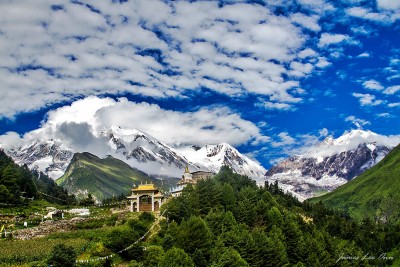
Tsum Valley And Ganesh Base Camp Trek
- Best Prices
- Easy Refund
22 days
USD
1,590
USD
1,270
